Thank You For Your Endless Curiosity Dr. Hawking.

Thank you for your endless curiosity Dr. Hawking.
More Posts from Matthewjopdyke and Others

Enjoy this First-Year-Anniversary compilation of all of my works in one title: A Cosmic Legacy: From Earth to the Stars Synopsis of Publication: Eliza Williams and a host of friendly heroes tackle some of the greatest dilemmas of the day to bring humanity out and into the stars bearing a legacy we would be proud to share with other civilizations--a legacy of kindness, of mind-to-mind communication, of love, and of healing instead of harming. If we are to overcome the great expansion and the death of all life, we must overcome the smaller challenges to progress and focus on even greater ones. Working with her team diligently, Eliza will speed the pace of society in her world with the belief that beauty and untold potential are within every being. If we find ways to bring that out in ourselves and others, a future where we can breed longevity, a collective and high quality of life, augment the clarity of our minds, and innovate to span the Cosmos may be in our grasp. ISBN: 978-1733313100 LCCN: 2019909630 #spaceopera #sciencefiction #books #pdf #ebook #goodbooks #longevity #neuroscience #biotechnology #physics #astronomy #politicalscifi #politics #culture #philosophy #nanotech #biopods #quantumphysics #theoreticalphysics #fantasy https://www.instagram.com/p/B0MzN2whIf1/?igshid=5y2mcf4ydaip

All three versions (chill, rock, orchestra) Further than Before: Pathway to the Stars, Part 1 -- Audible “Nature and humanity can be amazing, but likewise, it can be brutal. Brutality, as far too many know it, is unnecessary if we consider and implement one thing, innovation with purpose—a good purpose is brutality’s ideal replacement, and it comes minus unnecessary misery. It’s starting to become clear to me now what it is that we can do and how we can do it.” - Eliza Williams to Yesha Alevtina (Further than Before: Pathway to the Stars, Part 1) #books #sciencefictionbooks #SpaceOpera #scifi #ftbpathwaypublications #grahambessellieu #matthewjopdyke #politicalsciencefiction https://www.instagram.com/p/BxGfu74g5Vb/?igshid=16f1jd0ctbwq
That's beautiful! :)
Milky way over Mount Hood from Laurence Lake, Oregon

"Your dreams are yours to pursue, they are beautiful, and you can't let anyone slow you down." ~ Sky Taylor to Vesha Celeste Pathway to the Stars: Part 1, Vesha Celeste #scifiauthor #spaceopera #authorsofinstagram #scifi #sciencefictionnovels #biotechnology #neuroscience #nanotechnology #longevity #theoreticalphysics #astronomy #virtualuniverse https://www.instagram.com/p/Bunk5e_ARbJ/?utm_source=ig_tumblr_share&igshid=fezlj30jxc0z
Black Holes are NICER Than You Think!
We’re learning more every day about black holes thanks to one of the instruments aboard the International Space Station! Our Neutron star Interior Composition Explorer (NICER) instrument is keeping an eye on some of the most mysterious cosmic phenomena.

We’re going to talk about some of the amazing new things NICER is showing us about black holes. But first, let’s talk about black holes — how do they work, and where do they come from? There are two important types of black holes we’ll talk about here: stellar and supermassive. Stellar mass black holes are three to dozens of times as massive as our Sun while supermassive black holes can be billions of times as massive!

Stellar black holes begin with a bang — literally! They are one of the possible objects left over after a large star dies in a supernova explosion. Scientists think there are as many as a billion stellar mass black holes in our Milky Way galaxy alone!
Supermassive black holes have remained rather mysterious in comparison. Data suggest that supermassive black holes could be created when multiple black holes merge and make a bigger one. Or that these black holes formed during the early stages of galaxy formation, born when massive clouds of gas collapsed billions of years ago. There is very strong evidence that a supermassive black hole lies at the center of all large galaxies, as in our Milky Way.

Imagine an object 10 times more massive than the Sun squeezed into a sphere approximately the diameter of New York City — or cramming a billion trillion people into a car! These two examples give a sense of how incredibly compact and dense black holes can be.
Because so much stuff is squished into such a relatively small volume, a black hole’s gravity is strong enough that nothing — not even light — can escape from it. But if light can’t escape a dark fate when it encounters a black hole, how can we “see” black holes?

Scientists can’t observe black holes directly, because light can’t escape to bring us information about what’s going on inside them. Instead, they detect the presence of black holes indirectly — by looking for their effects on the cosmic objects around them. We see stars orbiting something massive but invisible to our telescopes, or even disappearing entirely!
When a star approaches a black hole’s event horizon — the point of no return — it’s torn apart. A technical term for this is “spaghettification” — we’re not kidding! Cosmic objects that go through the process of spaghettification become vertically stretched and horizontally compressed into thin, long shapes like noodles.

Scientists can also look for accretion disks when searching for black holes. These disks are relatively flat sheets of gas and dust that surround a cosmic object such as a star or black hole. The material in the disk swirls around and around, until it falls into the black hole. And because of the friction created by the constant movement, the material becomes super hot and emits light, including X-rays.
At last — light! Different wavelengths of light coming from accretion disks are something we can see with our instruments. This reveals important information about black holes, even though we can’t see them directly.

So what has NICER helped us learn about black holes? One of the objects this instrument has studied during its time aboard the International Space Station is the ever-so-forgettably-named black hole GRS 1915+105, which lies nearly 36,000 light-years — or 200 million billion miles — away, in the direction of the constellation Aquila.
Scientists have found disk winds — fast streams of gas created by heat or pressure — near this black hole. Disk winds are pretty peculiar, and we still have a lot of questions about them. Where do they come from? And do they change the shape of the accretion disk?

It’s been difficult to answer these questions, but NICER is more sensitive than previous missions designed to return similar science data. Plus NICER often looks at GRS 1915+105 so it can see changes over time.
NICER’s observations of GRS 1915+105 have provided astronomers a prime example of disk wind patterns, allowing scientists to construct models that can help us better understand how accretion disks and their outflows around black holes work.

NICER has also collected data on a stellar mass black hole with another long name — MAXI J1535-571 (we can call it J1535 for short) — adding to information provided by NuSTAR, Chandra, and MAXI. Even though these are all X-ray detectors, their observations tell us something slightly different about J1535, complementing each other’s data!
This rapidly spinning black hole is part of a binary system, slurping material off its partner, a star. A thin halo of hot gas above the disk illuminates the accretion disk and causes it to glow in X-ray light, which reveals still more information about the shape, temperature, and even the chemical content of the disk. And it turns out that J1535’s disk may be warped!

Image courtesy of NRAO/AUI and Artist: John Kagaya (Hoshi No Techou)
This isn’t the first time we have seen evidence for a warped disk, but J1535’s disk can help us learn more about stellar black holes in binary systems, such as how they feed off their companions and how the accretion disks around black holes are structured.
NICER primarily studies neutron stars — it’s in the name! These are lighter-weight relatives of black holes that can be formed when stars explode. But NICER is also changing what we know about many types of X-ray sources. Thanks to NICER’s efforts, we are one step closer to a complete picture of black holes. And hey, that’s pretty nice!
Make sure to follow us on Tumblr for your regular dose of space: http://nasa.tumblr.com.
Pretty nice representation of Earth on through to the observable universe

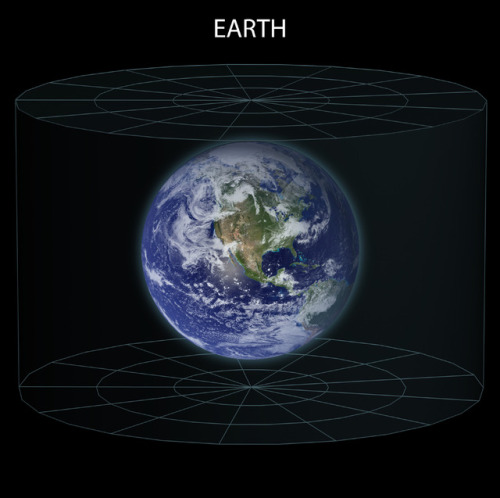
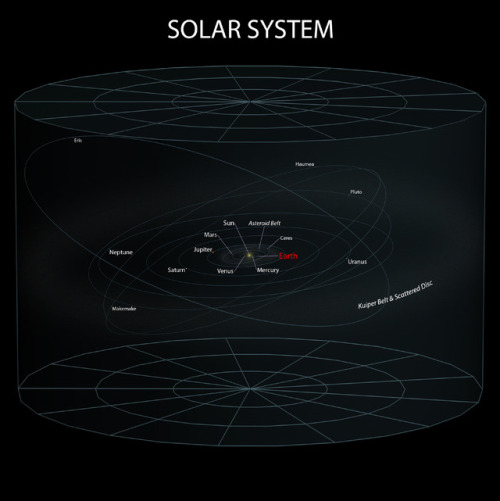
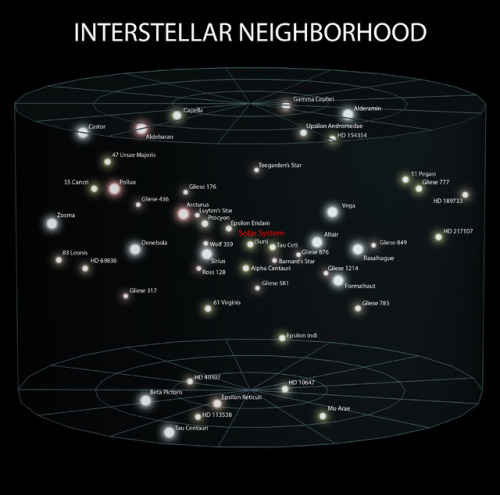
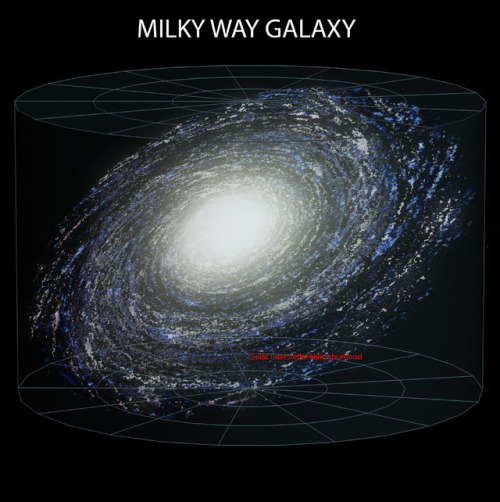
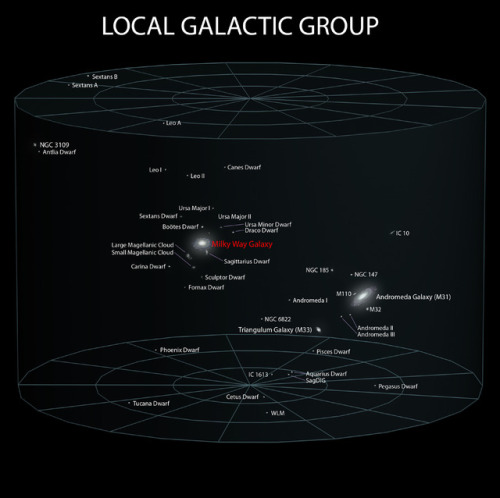
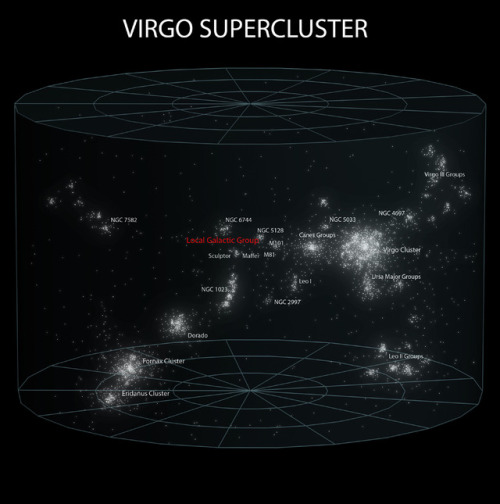
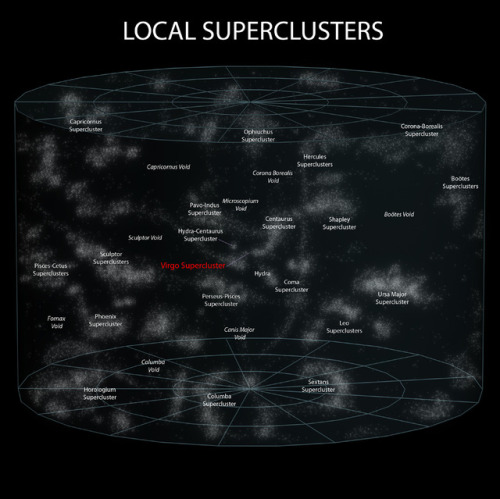
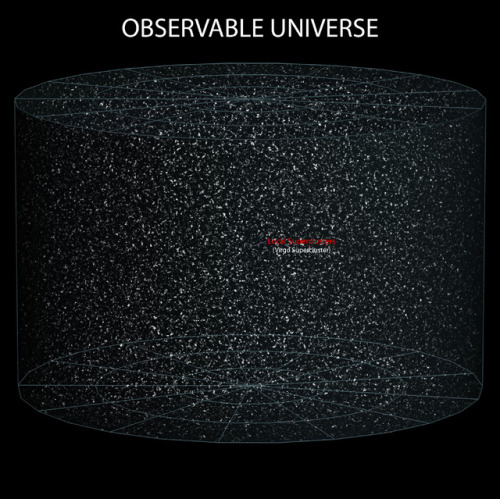
~ wikimedia commons

(I got a little artsy for the promo videos and wanted to share...) PATHWAY TO THE STARS: PART 2, ELIZA WILLIAMS is the second in the space opera booklet series, PATHWAY TO THE STARS. "We need to understand how dark energy and dark matter work, find ways to slow down the expansion or cause the Universe to breathe just enough to protect itself and all of life along with it. We need everyone who is willing." ~ Yesha Alevtina talking with Eliza Williams The story continues, Experience the early life of our future scientific and political hero, Eliza Williams, and the beginning of a new era! Vesha Celeste continues her training and journey with Yesha Alevtina, who shows and teaches her about Eliza Williams, through complete experiential immersion in the Virtual Universe. With the added advantages of time-dilation, neural linking, and nano-technology giving her tactile-reference, she sees Eliza’s life as if she were Eliza, herself. Vesha witnesses the critical aspects that lead to Eliza’s transformation and the formation of Pathway LLC. Eliza’s work to create the first biopods for physiological and neurological optimizations will be one of her primary vehicles to drive all of her advances and designs, solar-system-wide. There is a lot for Vesha to learn, and she too will play an integral role in our journeys throughout the cosmos, as this story progresses. Each ability she experiences in others, her optimized mind will be capable of learning and expounding upon exponentially. Enjoy the second part of this space opera booklet series, as we see our team of heroes doing what they can to help humanity in their quest to save the Universe one very-important step at a time. Enjoy this continuing saga as we are introduced to Eliza Williams, a critical leader-in-the-making, in this pathway to the stars! Available in paperback on Amazon Kindle and Barnes & Noble online. eBook available for $2.99 via Kindle eBooks. Audiobook is in the works, narrated and produced by Allison Taylor. #spaceopera #spaceoperabooks #scifibooks #scifi #fantasy #books #solarsystem #CRISPR #neuroscience #longevity #wellbeingfirst #pathwaytothestars https://www.instagram.com/p/B1YlbtWhFxK/?igshid=lovyil9nitpj
Largest Batch of Earth-size, Habitable Zone Planets
Our Spitzer Space Telescope has revealed the first known system of seven Earth-size planets around a single star. Three of these planets are firmly located in an area called the habitable zone, where liquid water is most likely to exist on a rocky planet.

This exoplanet system is called TRAPPIST-1, named for The Transiting Planets and Planetesimals Small Telescope (TRAPPIST) in Chile. In May 2016, researchers using TRAPPIST announced they had discovered three planets in the system.

Assisted by several ground-based telescopes, Spitzer confirmed the existence of two of these planets and discovered five additional ones, increasing the number of known planets in the system to seven.

This is the FIRST time three terrestrial planets have been found in the habitable zone of a star, and this is the FIRST time we have been able to measure both the masses and the radius for habitable zone Earth-sized planets.
All of these seven planets could have liquid water, key to life as we know it, under the right atmospheric conditions, but the chances are highest with the three in the habitable zone.

At about 40 light-years (235 trillion miles) from Earth, the system of planets is relatively close to us, in the constellation Aquarius. Because they are located outside of our solar system, these planets are scientifically known as exoplanets. To clarify, exoplanets are planets outside our solar system that orbit a sun-like star.

In this animation, you can see the planets orbiting the star, with the green area representing the famous habitable zone, defined as the range of distance to the star for which an Earth-like planet is the most likely to harbor abundant liquid water on its surface. Planets e, f and g fall in the habitable zone of the star.
Using Spitzer data, the team precisely measured the sizes of the seven planets and developed first estimates of the masses of six of them. The mass of the seventh and farthest exoplanet has not yet been estimated.

For comparison…if our sun was the size of a basketball, the TRAPPIST-1 star would be the size of a golf ball.
Based on their densities, all of the TRAPPIST-1 planets are likely to be rocky. Further observations will not only help determine whether they are rich in water, but also possibly reveal whether any could have liquid water on their surfaces.
The sun at the center of this system is classified as an ultra-cool dwarf and is so cool that liquid water could survive on planets orbiting very close to it, closer than is possible on planets in our solar system. All seven of the TRAPPIST-1 planetary orbits are closer to their host star than Mercury is to our sun.

The planets also are very close to each other. How close? Well, if a person was standing on one of the planet’s surface, they could gaze up and potentially see geological features or clouds of neighboring worlds, which would sometimes appear larger than the moon in Earth’s sky.

The planets may also be tidally-locked to their star, which means the same side of the planet is always facing the star, therefore each side is either perpetual day or night. This could mean they have weather patterns totally unlike those on Earth, such as strong wind blowing from the day side to the night side, and extreme temperature changes.

Because most TRAPPIST-1 planets are likely to be rocky, and they are very close to one another, scientists view the Galilean moons of Jupiter – lo, Europa, Callisto, Ganymede – as good comparisons in our solar system. All of these moons are also tidally locked to Jupiter. The TRAPPIST-1 star is only slightly wider than Jupiter, yet much warmer.
How Did the Spitzer Space Telescope Detect this System?
Spitzer, an infrared telescope that trails Earth as it orbits the sun, was well-suited for studying TRAPPIST-1 because the star glows brightest in infrared light, whose wavelengths are longer than the eye can see. Spitzer is uniquely positioned in its orbit to observe enough crossing (aka transits) of the planets in front of the host star to reveal the complex architecture of the system.

Every time a planet passes by, or transits, a star, it blocks out some light. Spitzer measured the dips in light and based on how big the dip, you can determine the size of the planet. The timing of the transits tells you how long it takes for the planet to orbit the star.

The TRAPPIST-1 system provides one of the best opportunities in the next decade to study the atmospheres around Earth-size planets. Spitzer, Hubble and Kepler will help astronomers plan for follow-up studies using our upcoming James Webb Space Telescope, launching in 2018. With much greater sensitivity, Webb will be able to detect the chemical fingerprints of water, methane, oxygen, ozone and other components of a planet’s atmosphere.
At 40 light-years away, humans won’t be visiting this system in person anytime soon…that said…this poster can help us imagine what it would be like:

Make sure to follow us on Tumblr for your regular dose of space: http://nasa.tumblr.com

-
 babeletmetouchthestars reblogged this · 2 years ago
babeletmetouchthestars reblogged this · 2 years ago -
 jubionpoint reblogged this · 3 years ago
jubionpoint reblogged this · 3 years ago -
 jubionpoint liked this · 3 years ago
jubionpoint liked this · 3 years ago -
 xhippiespiritx liked this · 3 years ago
xhippiespiritx liked this · 3 years ago -
 psychokurango liked this · 3 years ago
psychokurango liked this · 3 years ago -
 still-a-wolf reblogged this · 3 years ago
still-a-wolf reblogged this · 3 years ago -
 still-a-wolf liked this · 3 years ago
still-a-wolf liked this · 3 years ago -
 magdalenejaneway liked this · 4 years ago
magdalenejaneway liked this · 4 years ago -
 josiiglesias liked this · 4 years ago
josiiglesias liked this · 4 years ago -
 thegodcup reblogged this · 4 years ago
thegodcup reblogged this · 4 years ago -
 thegodcup liked this · 4 years ago
thegodcup liked this · 4 years ago -
 elusiveladydjinn liked this · 4 years ago
elusiveladydjinn liked this · 4 years ago -
 lunamoonmond reblogged this · 4 years ago
lunamoonmond reblogged this · 4 years ago -
 meteorologistaustenlonek reblogged this · 4 years ago
meteorologistaustenlonek reblogged this · 4 years ago -
 meteorologistaustenlonek liked this · 4 years ago
meteorologistaustenlonek liked this · 4 years ago -
 desertmmermaid liked this · 4 years ago
desertmmermaid liked this · 4 years ago -
 atemu-remus reblogged this · 4 years ago
atemu-remus reblogged this · 4 years ago -
 atemu-remus liked this · 4 years ago
atemu-remus liked this · 4 years ago -
 yags007 reblogged this · 5 years ago
yags007 reblogged this · 5 years ago -
 yags007 liked this · 5 years ago
yags007 liked this · 5 years ago -
 drxfunk liked this · 5 years ago
drxfunk liked this · 5 years ago -
 on-me-for-me-by-me reblogged this · 5 years ago
on-me-for-me-by-me reblogged this · 5 years ago -
 reallysocandy liked this · 5 years ago
reallysocandy liked this · 5 years ago -
 yoursisnodisgrace reblogged this · 5 years ago
yoursisnodisgrace reblogged this · 5 years ago -
 koofteh liked this · 5 years ago
koofteh liked this · 5 years ago -
 onbackroads reblogged this · 5 years ago
onbackroads reblogged this · 5 years ago -
 neov liked this · 5 years ago
neov liked this · 5 years ago -
 daysofterroruponus reblogged this · 5 years ago
daysofterroruponus reblogged this · 5 years ago -
 daysofterroruponus liked this · 5 years ago
daysofterroruponus liked this · 5 years ago -
 missgorefan-blog liked this · 5 years ago
missgorefan-blog liked this · 5 years ago -
 th3-eye liked this · 5 years ago
th3-eye liked this · 5 years ago -
 micaleann liked this · 5 years ago
micaleann liked this · 5 years ago -
 makiav-blr-blog liked this · 5 years ago
makiav-blr-blog liked this · 5 years ago -
 primordialsoundmeditation liked this · 5 years ago
primordialsoundmeditation liked this · 5 years ago -
 arpov-blog-blog reblogged this · 5 years ago
arpov-blog-blog reblogged this · 5 years ago -
 arpov-blog-blog liked this · 5 years ago
arpov-blog-blog liked this · 5 years ago -
 ghostonthestars reblogged this · 5 years ago
ghostonthestars reblogged this · 5 years ago -
 ghostonthestars liked this · 5 years ago
ghostonthestars liked this · 5 years ago -
 edgesofclimatechange liked this · 5 years ago
edgesofclimatechange liked this · 5 years ago
